Dragon Fruit Plant Diseases: The dragon fruit plant, prized for its exotic charm and nutritious abundance, is a botanical gem in the lush tapestry of horticulture. But even in all its beauty, the dragon fruit plant is not immune to the ominous shadows of disease. This article delves into the mysterious world of dragon fruit plant diseases, examining their varied expressions, guards against them, and ways to control them.
Recognising the dragon fruit plant diseases:
Anthracnose: Colletotrichum
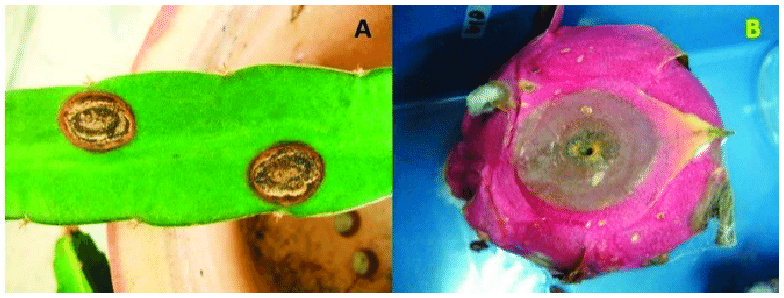
Anthracnose, the elusive adversary, is at the root of diseases affecting dragon fruit plants. This mysterious disease manifests as dark spots on fruit and stems. Its face is drenched in water, and as the story goes on, the affected regions descend into a submerged depression. During the fruit-setting stage, this enemy calls for our attention and casts a shadow over the dragon fruit’s impending beauty.
Soft Rot of Bacteria: Erwinia

Bacterial soft rot presents a sneaky threat to the developing dragon fruit plant. The surreptitious offender, Erwinia, composes a suite of wet wounds that transform into a mushy excess. A smell attack accompanies the illness, generating a deteriorating atmosphere. Being vigilant is crucial, and eliminating the threat is the only way to keep the plant alive.
Root Rot: Phytophthora and Pythium

Under the surface, root rot is a cunning enemy. The malicious Pythium and Phytophthora, unseen masterminds of chaos, cause withering, yellowing, and a desolate decay of the roots. Stunted flora echoes the mute pain beneath the surface. The remedy consists of carefully planning soil that drains properly, using minimal water, and applying fungicide sparingly.
Bacterial Canker: Xanthomonas

Bacterial canker, a red-headed overture that takes shape, is a dramatic illness that Xanthomonas directed. A reddish-brown fluid seeps from sunken sores on stems, resulting in a tragic scene of plants. A melancholic ballet is created out of the pruning and sacrificial purging of sick areas, while copper-based sprays operate as a sentinel against this bacterial enemy.
Fungal Spot: Alternaria
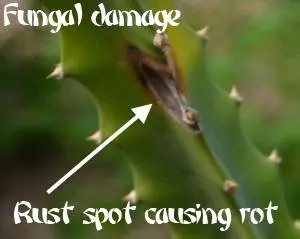
The fungus Fungal Spot performs an occult dance on the leaves of dragon fruit plant illnesses. Circular, dark patches appear with yellow haloes, turning the foliage into a bedraggled painting. Following the principles of better air circulation and the deliberate application of fungicides, a ballet of removal takes place.
Fusarium Wilt: Fusarium

Fusarium wilt is front and center in the dragon fruit garden, and sorrow resounds throughout. The course of this fungal disease is characterized by vascular staining, yellowing, and wilting leaves. Crop rotation and the vigilant removal and destruction of diseased plants are the keys to surviving Fusarium’s stealthy attack.
Powdery Mildew: Sphaerotheca

As dragon fruit plants strive to reach the sky, Powdery Mildew, a celestial calamity, appears. Sphaerotheca reveals its ethereal cloak, a white, powdered patina covering leaves, stems, and fruit. Air, pruning, and fungicides dance together to drive this alien pest out of the botanical world.
Virus-Related Illnesses: Piecing Together the Genetic Web
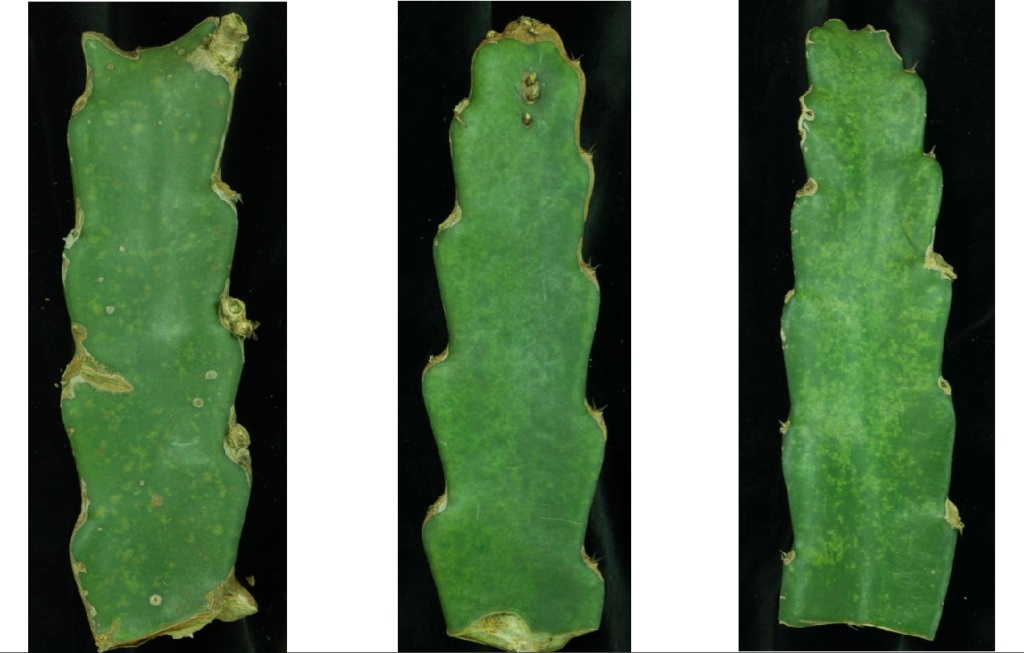
Stunted development, warped fruit, and mottled leaves are all part of the genetic tapestry that is the mysterious realm of virus diseases. The search for disease-free planting material, sanitary practices, and vector control become the guards against these genetic mysteries.
Infestation of Nematodes: Roots in Nodules
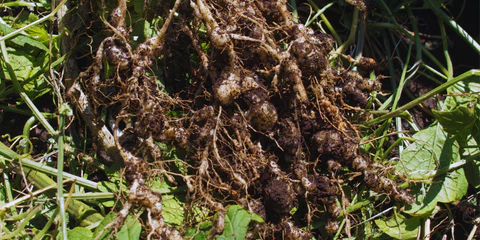
Nematode infestation is a subterranean disease that burrows its roots in troublesome nodules beneath the earth. Stunted growth, yellowing, and root knots are indicators of it. Crop rotation, soil management, and nematode-resistant cultivars launched a counteroffensive that served as the defence against this underground onslaught.
Scale Insects: Little Bump, Big Unease
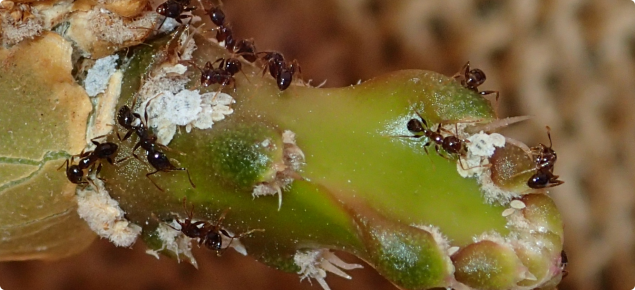
The small, troublesome Scale insects attach themselves to tiny bumps on stems and foliage. A great unease arises as their presence weakens the vitality of the plants. Natural predators turn into allies, and the first line of defence against this scaly threat is horticultural oils and careful pruning.
The Prevention Remedies
Prevention turns out to be the best treatment when it comes to dragon fruit plant diseases. The watchful gardener adheres to the following principles:
Vigilance in quarantine:
Before integrating new plants into the dragon fruit refuge, thoroughly examine them and put them through a quarantine rite.
Sanitation ceremonies:
According to the sacred ceremonies of sanitation, sick plant parts must be ceremoniously removed and destroyed. A pristine canvas creates a robust haven.
Hydric Harmony:
A delicate dance, the art of watering. Root disease prevention involves avoiding excesses and deficiencies and creating a hydric balance.
Circadian Airflow:
The coordination of air circulation creates a leaf ballet. The three main defences against foliar diseases are pruning, spacing, and a light breeze.
Disease-Resistant cultivars:
Choosing disease-resistant cultivars becomes a powerful tool in the gardener’s arsenal. Due to the genetic resilience present in these cultivars, the dragon fruit plant is more resistant to intangible enemies.
The Management Guard
When misfortune rears its ugly head, the dragon fruit fan adopts a managerial persona:
Surgical Pruning: When diseased tissue is exposed to a sacrificial blade, a surgical ballet takes place. Pruning turns into a dance of accuracy and purging.
Fungicidal Elixirs: When applied with caution, fungicide elixirs can act as potions that impede fungal schemes. A strategic application acts as a defence against enemies that are invisible.
Copper-Based Guards: The metallic copper guards painted on the plant’s citadel are effective at repelling bacterial intruders. glittering metallic armour that promised to shield.
Vector Vigilance: Protection against viral illnesses extends beyond the world of plants. Managing insect vectors becomes the quiet watchdog that protects the genetic integrity of the dragon fruit sanctuary.
In conclusion
In summary, the symphony of diseases affecting dragon fruit plants creates a beautiful balance between hardship and resilience. The gardener becomes the protector of this botanical sanctuary when the dragon fruit plant, the plant’s botanical protagonist in this lush tale, reveals its weakness. The dragon fruit garden endures as we negotiate the maze of illnesses with knowledge and skill at prevention—a monument to the victory of cultivation over affliction
